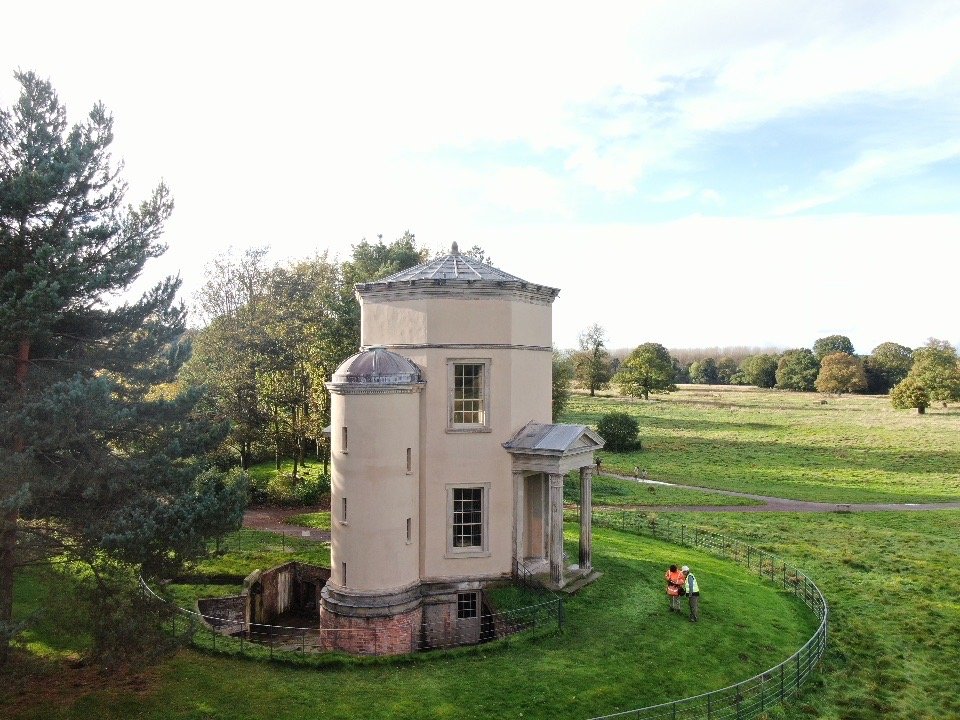Old Rectory, Whitchurch
The restoration of The Old Rectory in Whitchurch involved urgent structural stabilisation and careful conservation of this Grade II* listed 18th-century building
St Andrew’s Church Bebbington Restoration
Two-phase restoration of this Grade I listed church included heritage re-roofing and spire repairs using traditional materials, specialist scaffolding, and expert masonry — all delivered safely, on time, and with minimal disruption.
Cambrian Station Buildings
Phillips & Curry Ltd have recently completed major external fabric repairs to the historic Cambrian Station Buildings in Oswestry.
Gobowen Railway Station Buildings
Phillips & Curry Ltd have recently completed major external fabric repairs to Gobowen Railway Station Buildings.
Red House Glass Cone Museum
In July 2023, we began work on the restoration of the Red House Glass Cone in Wordsley
St. Michael’s & All Angels Church, Welshampton, Shropshire
In 2006, we completed the re-roofing of St. Michael’s & All Angels Church in Welshampton, Shropshire
Tower of Wind- Shugborough
The original Tower of the Winds in Athens was an octagonal tower featuring carvings in relief, each depicting the nature of the wind. At the top of the tower stood a bronze weathervane. Shugborough’s version of the tower was completed in 1765 by James 'Athenian' Stuart
St. John the Baptist Church, Myndtown
St. John the Baptist Church, Myndtown, is nestled in the lower slopes at the northwest end of the Longmynd chain of hills, one of Shropshire’s most important wild landscapes.
The Victorian Buildings, Dolgellau
The Victorian Buildings in Dolgellau were restored under the Dolgellau Township Heritage Scheme, a program that has been running for the past 15 years.
Sunnycroft. National Trust Property
Sunnycroft is a somewhat unusual National Trust property. It is a large Victorian villa, built in the 1920s within the grounds of what could almost be described as a mini country estate.
Capel Celyn
Capel Celyn was a rural community in the Afon Tryweryn valley, northwest of Bala. In 1965, the village and surrounding valley were flooded to create Llyn Celyn, a reservoir supplying water to Liverpool and the Wirral for industrial use.
Bear Steps
Bear Steps is a series of buildings in the ancient medieval and Tudor area of Shrewsbury town centre, adjacent to St Alkmund’s Square and Fish Street.
Llanvihangel Court
Llanvihangel Court is a late medieval gem with origins in the late 15th century. The house was first mentioned in historical records during the reign of Henry VI (1422–1471), when Thomas, the second son of John ap Gwillim Jenkin of Wernddu, was Lord of the Manor.
The Stiwt Theatre, Wrexham
The works comprised general building fabric repairs and maintenance, with the main emphasis on the south-facing front elevation of the theatre, along with the repair of the clock and clock turret located centrally above.
The Judges Lodgings, Presteigne, Powys
The Judges Lodging is a Grade II listed building. The building is now run as a museum with the 18th century courthouse and surrounding rooms meticulous preserved as originally used.
Church of St Mary’s the Virgin, Brecon
The church is a Grade II* listed building and dates back to the 12th century. Its location in the centre of Brecon and the dominating 16th-century tower make it one of the most prominent buildings in Brecon.
Ludlow Castle Norman Tower
Build shortly after the Norman Conquest as part of a string of defences that straddled the border between England and Wales, Ludlow Castle was designed as a key defence in efforts to prevent incursions by the Welsh who were resisting attempts to bring Wales under the Norman yoke
The Shippon
This project, which we took on in 2015, was novel, interesting, and challenging. The owner is a renowned architectural historian who worked jointly with RIBA architect Sean Pemble, formerly of Arrol & Snell, to develop a truly unique conversion of The Shipin, an 18th-century redundant dairy spanning approximately 4,000 square feet.


















